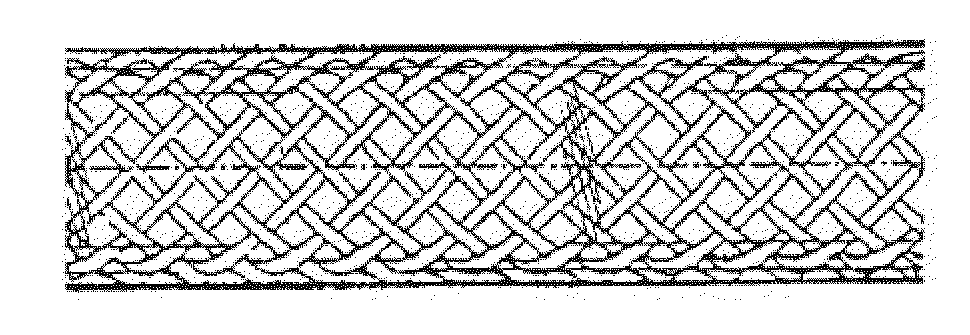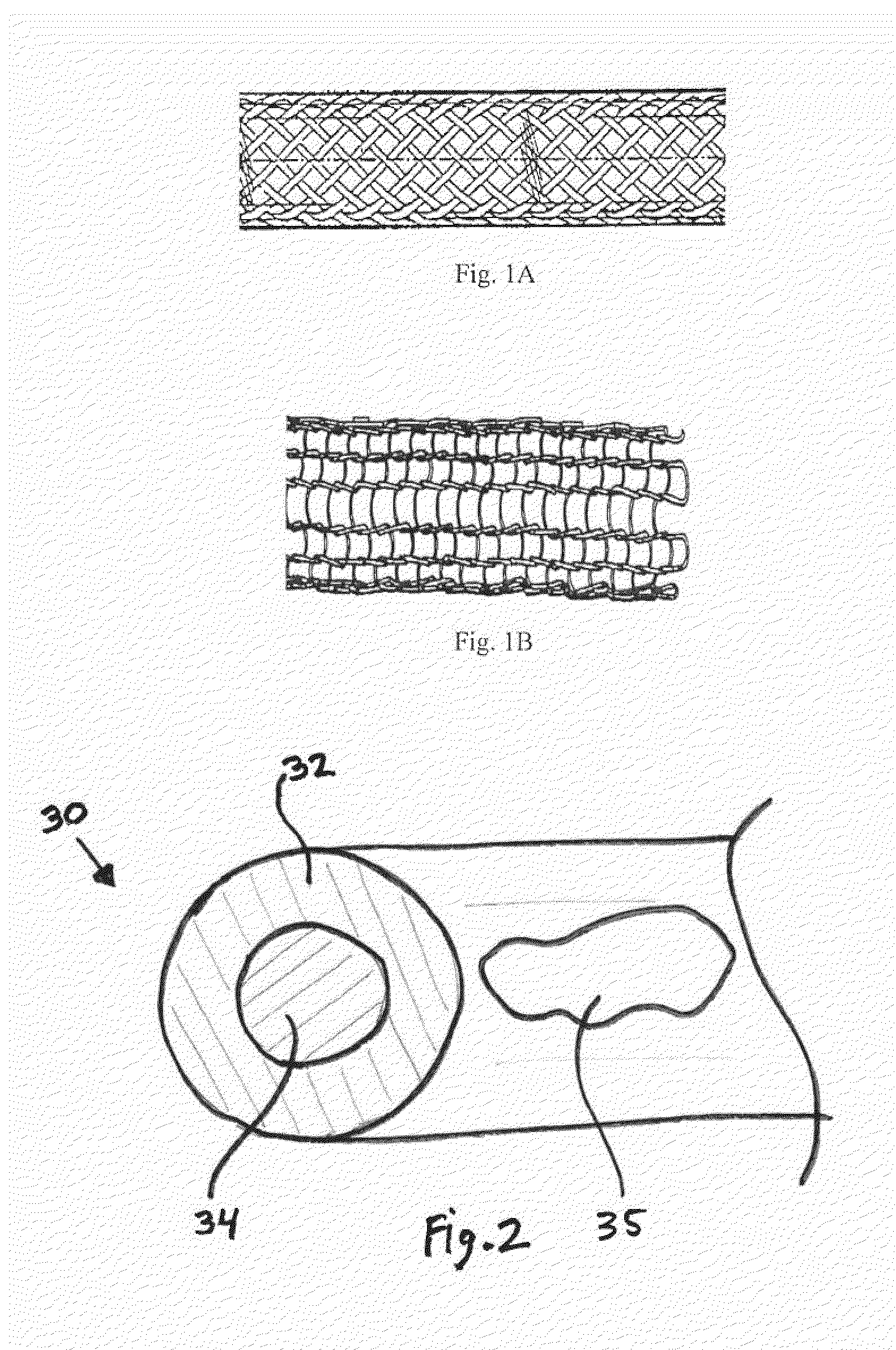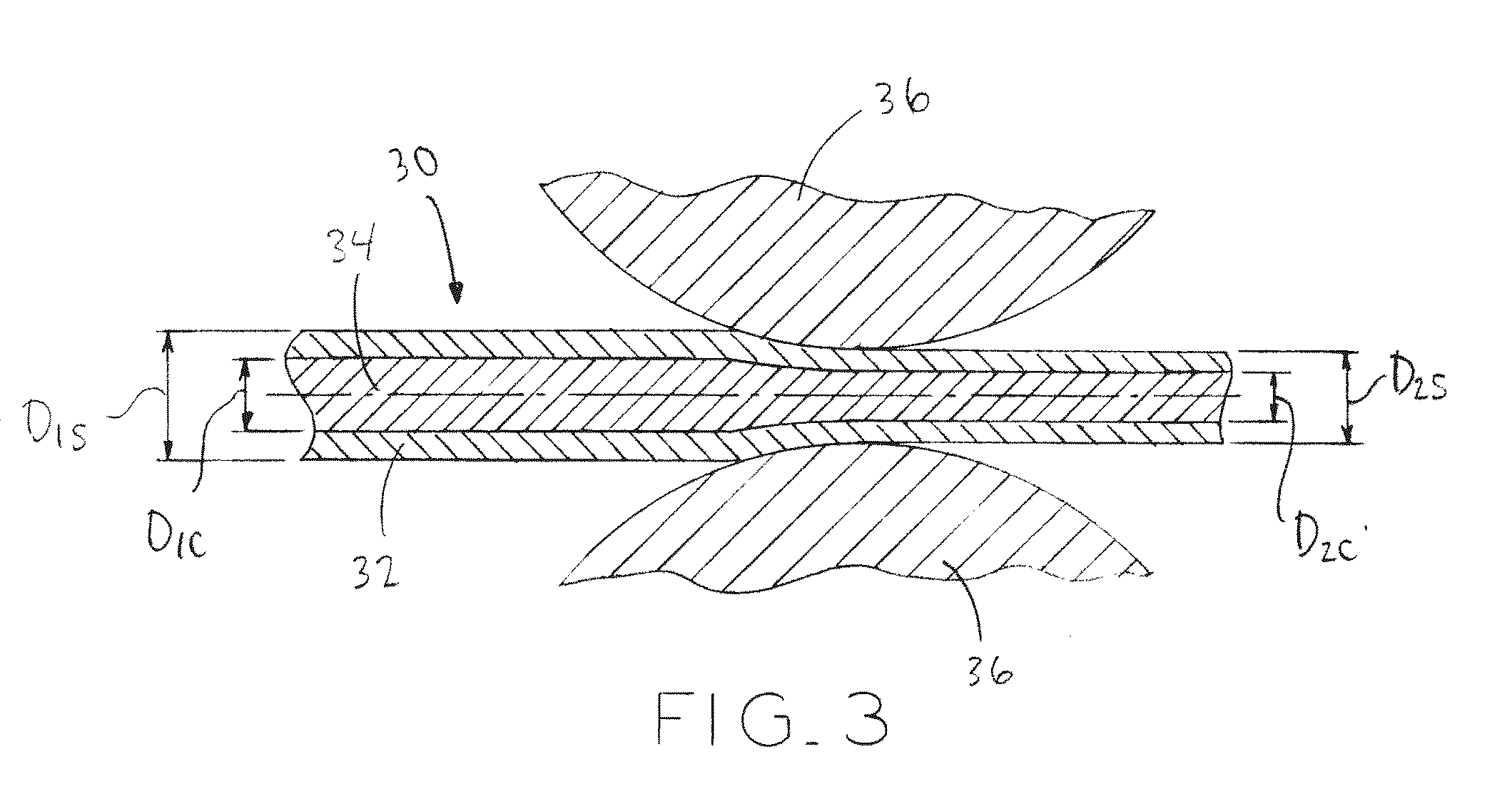Biodegradable composite wire for medical devices
a biodegradable, composite wire technology, applied in the field of wires, can solve the problems of limiting re-intervention, increasing mechanical fatigue, affecting the removal of stents, etc., and achieves the effect of restoring the patency of the vessel and differing biodegradation rates
- Summary
- Abstract
- Description
- Claims
- Application Information
AI Technical Summary
Benefits of technology
Problems solved by technology
Method used
Image
Examples
example 1
[0110]In this Example, exemplary bimetal composite wires and high strength iron monolith wires were produced, tested and characterized. In addition, three benchmark alloy wires were produced, tested and characterized for comparison to the exemplary wires.
[0111]1. Production of Bimetal Composite and Monolithic Wires
[0112]For Wire # 1-3 in Tables 1 and 4 below, a pure Fe rod of dimension F mm outside diameter (OD) was processed as monolithic (solid) wire.
[0113]Similarly, for Wire # 7-9 in Tables 3 and 4 below, 316L stainless steel, MP35N and Nitinol alloy wire respectively, of dimension H mm outside diameter (OD) were processed as monolithic wire.
[0114]For Wire # 4-6 in Tables 2 and 4 below, a pure Fe tube of dimension A mm outside diameter (OD) x dimension B mm inside diameter (ID) was filled and drawn down over dimension C mm outside diameter (OD) pure Mg rod to create a first composite having the area fraction specified. Value D is the area fraction as defined by the ratio of the c...
PUM
| Property | Measurement | Unit |
|---|---|---|
| yield strength | aaaaa | aaaaa |
| diameter | aaaaa | aaaaa |
| temperatures | aaaaa | aaaaa |
Abstract
Description
Claims
Application Information
 Login to View More
Login to View More - R&D
- Intellectual Property
- Life Sciences
- Materials
- Tech Scout
- Unparalleled Data Quality
- Higher Quality Content
- 60% Fewer Hallucinations
Browse by: Latest US Patents, China's latest patents, Technical Efficacy Thesaurus, Application Domain, Technology Topic, Popular Technical Reports.
© 2025 PatSnap. All rights reserved.Legal|Privacy policy|Modern Slavery Act Transparency Statement|Sitemap|About US| Contact US: help@patsnap.com



